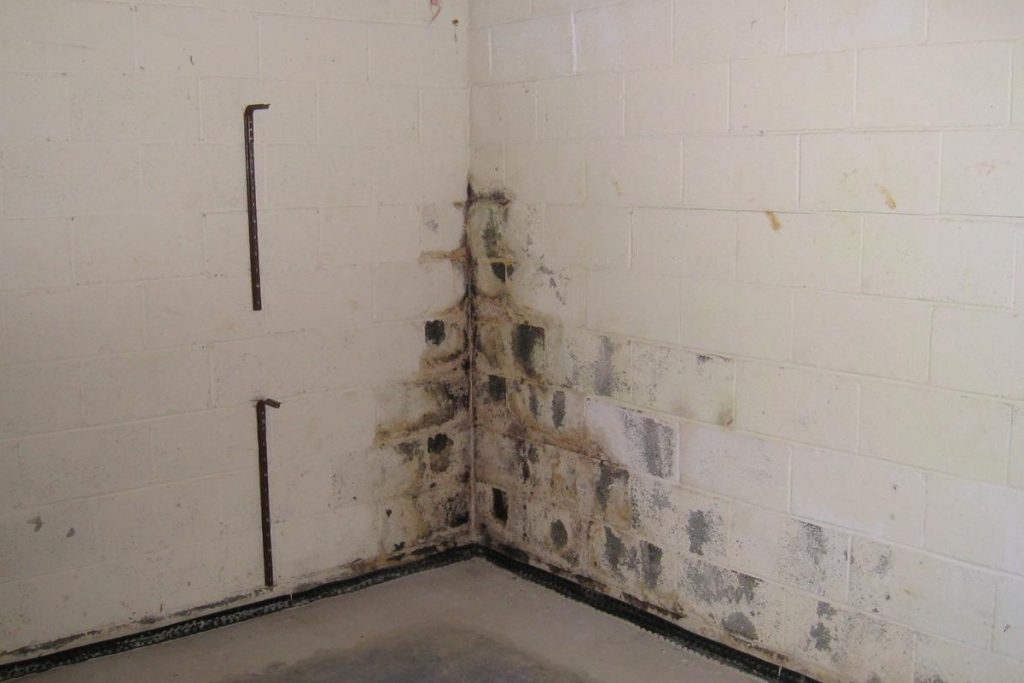Humidity is the amount of moisture or water vapour in the air. Every person and animal produces moisture through the act of breathing and/or perspiring. Indoor plants also contribute moisture to the air.
What causes a house to be humid?
Regular household activities such as cooking, showering, bathing, doing laundry and dishwashing add further water vapour to indoor air. In addition, much more moisture can enter your home from the surrounding soil through a basement or crawl space; especially a wet and leaking basement.
Humidity is necessary for our comfort and health but too much or too little of it can cause a number of problems for homeowners. Some of the symptoms and effects are little more than nuisances but others can be much more serious. The table below outlines the syptoms and effects associated with too much and too little humidity in your home:
| Typical symptoms | Too much humidity Condensation on windows Wet stains on walls and ceilings Mouldy bathrooms Musty smells Allergic reactions | Too little humidity Chapped skin and lips Scratchy nose and throat Breathing problems Static and sparks Problems with electronic equipment |
| Long-term effects | Damage to the house and its contents Ongoing allergies Other health problems | Continuing discomfort with dry skin and respiratory system Damage to furniture and other items |
Humidity is usually measured as relative humidity (RH). RH is a percentage that indicates the amount of moisture in the air relative to the maximum amount the air can hold at that temperature. For example, when air at a certain temperature contains all the water vapour it can hold at that temperature, it has a RH of 100%. If the humidity is greater than 100%, moisture will begin to condense from the air. If the air contains only half the water it can hold at that temperature, the RH is 50%. Warm air can hold more moisture than cool air, so the RH of a sample of air will change as the temperature changes, even though the actual amount of moisture in the air does not; for instance, as the air cools, the RH rises.
How much humidity is too much and how much is too little?
Humidity levels in your home can easily be either too high or too low. In both instances, problems can occur. Acceptable or comfortable humidity levels will actually vary from season to season, from house to house and between rooms of the same house. According to Canada Housing and Mortgage Corporation (CMHC), the recommended indoor RH is 30% to 45%, to a maximum of 50%; if the thermometer drops below -10°C (14°F) outdoors, the recommended indoor RH is 30% or lower in order to prevent condensation on the inside of your windows.
Note: Upgraded energy efficient windows can support higher levels of RH without condensation occurring.
What you can do if you have a humidity problem
If you have a humidity problem, it can usually be controlled by either reducing it if it is too high or increasing it if it is too low. In the summer, you can reduce your home’s humidity levels by using a dehumidifier. In the winter, a house that is too humid typically has some high moisture sources such as a damp or leaking basement. It is strongly advised that you deal with these problems before you make changes in your family’s habits or install equipment to remove excess humidity. Very low indoor RH levels in the winter results from cold, dry air leaking in from outside. Sealing up the house by weather-stripping and caulking will improve humidity conditions indoors. You may also consider using a humidifier to increase indoor RH levels but if they are not installed, used and maintained properly, they can become sources of excess moisture and cause mould growth in your home.
Excess Moisture = Air Quality Problems
Every day, 10 to 50 litres (2 to 10 gallons) of moisture is being released within your house. In the winter (heating) season lasting 200 days, on average, when your home is typically closed up, 2,000 to 10,000 litres (400 to 2,000 gallons) of moisture can be trapped within the air of your home. In fact, a cord of wood stored in your home, can release more than 270 litres of moisture alone. Too much moisture can ultimately result in air quality problems.
For optimal health, the air you breathe in your home should be clean and your home should have a continuous exchange of air between the indoors and outdoors. It is recommended that all moist stale air be replaced with fresh air every 3 to 4 hours. Without it, moisture will accumulate, mould may develop and you will have poor air quality. Mould growing in your house can release mould spores, toxins and odours. Adequate air exchange is also necessary in order to avoid air quality related issues originating from harmful chemicals that can also be released from synthetic fabrics, furnishings, and household products. Additional sources of pollutants are cigarette or cigar smoke, burning candles, and/or improperly maintained or vented combustion devices such as gas or propane cooking stoves, furnaces, water heaters, wood stoves and fireplaces. The exchange of stale air with fresh air reduces potential air quality problems. Most household moisture related problems can be resolved by doing the following:
a. Implement a plan to prevent excess moisture in your home;
b. Perform regular maintenance and minor repairs; and
c. Hire a professional waterproofing contractor to conduct repairs related to basement leaks and cracks and foundation waterproofing in general.
